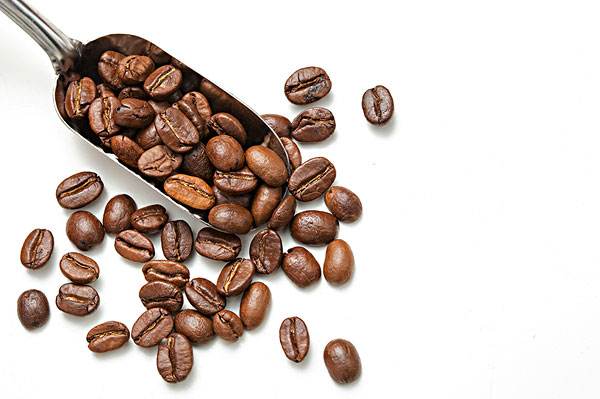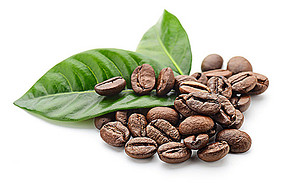What are the functions of Arabica coffee
Pay attention to coffee reviews (Weixin Official Accounts vdailycom ) and find a beautiful cafe to open your own shop
Ethiopia is home to Arabica coffee, and it is in the forests of Ethiopia's Kaffa region that you can see Arabica coffee growing wild. In Ethiopian, coffee is called "Bun" or "Buna," and coffeebean may be translated from "Kaffa Bun." Arabica coffee has long been found in the Harar region, probably from the Kafa forest.
Ethiopian coffee is processed by sun and water washing. The flavor of coffee processed by different processing methods varies greatly. Generally speaking, the mellow and earthy taste of washed Sidamo, Yirgacheffe and Limmu coffee is slightly lower, and the coffee processed by sun has a wilder taste. However, each batch of Ethiopian coffee may taste different, which requires more cup tests to find really good coffee.

Ethiopian coffee grades
● Ethiopian washed coffee Yegashefi G1 G2
● The highest grades of Yirgacheffe, Sidamo are Grade II and Grade III ( G2, G3),
● Coffee sun-processed in eastern Ethiopia is mostly grade 4 or grade 5 (G4, G5).
In many cases, fourth-grade coffee is labeled as five-grade in order to reduce taxes. The classification is now less uniform and somewhat chaotic, because there are also Grand G2 and Grand G2, but Harar is the highest grade (G4).
Ethiopian coffee producing areas are Sidamo, Harrar and Yirgacheffe. Sidamo and Harrar are provinces and divisions. Sidamo is located in the south of Ethiopia adjacent to Kenya. Harrar borders Somalia in the east of Ethiopia. Although Yirgacheffe is a small area in Sidamo region, due to soil composition and water content, its coffee production is considered to be the best in Ethiopia.
In the West, Ethiopian coffee is marketed as Yirgacheffee, Sidamo and Harrar.
In the fine coffee field, there are five other small places for coffee, namely Limmu, Djimmah, Lekempti, Bebeka and Wolega. The most common coffee is either Sidamo or Harrar coffee.
Harar Coffee
From the eastern highlands of Ethiopia, bean-shaped medium size, green-yellow, medium acidity, full body, with typical mocha flavor (mocha flavor). It is one of the most famous coffees in the world.
Wollega (Nekempte) Coffee
Western Ethiopia, medium to large bean-shaped, noted for its fruity flavor. Green, brown color, acidity and body are good. It can be made into a combination or a single item.
Limu Coffee
It is famous for its spicy and Winnie flavor and is popular in Europe and America. Acidity, good body, washed Lim coffee is also a fine coffee darling. Bean-shaped medium, green-blue, mostly round.
Sidama Coffee
Medium bean shape, green-gray, Sidamo washed coffee is characterized by balanced taste and flavor. It is known as sweet coffee. It has fine acidity and good body. It is produced in southern Ethiopia and can be combined with fine products.
Yirgachafe Coffee
It has a strong floral flavor. Washed coffee is one of the world's best high-quality coffee, soft acidity, rich body. Top and Bebeka coffees, low in acidity but high in body, are indispensable members of coffee blends.
The advantages and disadvantages of drinking coffee: close contact with coffee caffeine because it stimulates the central nervous system and muscles, so you can cheer up, enhance your thinking ability, and restore muscle fatigue. It acts on cardiovascular system, improves heart function, relaxes blood vessels and promotes blood circulation. For the gastrointestinal system, it helps digestion and helps break down fat.
Important Notice :
前街咖啡 FrontStreet Coffee has moved to new addredd:
FrontStreet Coffee Address: 315,Donghua East Road,GuangZhou
Tel:020 38364473
- Prev

How about Arabica coffee? what kind of Arabica coffee
Following caf é (Wechat official account vdailycom) found that the coffee beans of Arabica species (Arabica) in Arabica were first grown in Ethiopia. The raw materials of coffee beans used as drinks were brought to Yemen in the 6th and 9th centuries, but at that time they were only transported by seeds. It was not until 1699 that the Dutch East India Company
- Next

Arabica Coffee introduction, Arabica Coffee beans
Kaibei (official Wechat account vdailycom) has found that Beautiful Cafe has opened a small shop of its own. The Lao Coffee Association hopes coffee growers will increase their income this year as coffee prices rise on the world market. It is reported that the current price of Arabica coffee is about 3200 US dollars per ton, while that of Robusta coffee is 1400 US dollars per ton. Last year, Arabica coffee sold for only $2500 a ton.
Related
- Detailed explanation of Jadeite planting Land in Panamanian Jadeite Manor introduction to the grading system of Jadeite competitive bidding, Red bid, Green bid and Rose Summer
- Story of Coffee planting in Brenka region of Costa Rica Stonehenge Manor anaerobic heavy honey treatment of flavor mouth
- What's on the barrel of Blue Mountain Coffee beans?
- Can American coffee also pull flowers? How to use hot American style to pull out a good-looking pattern?
- Can you make a cold extract with coffee beans? What is the right proportion for cold-extracted coffee formula?
- Indonesian PWN Gold Mandrine Coffee Origin Features Flavor How to Chong? Mandolin coffee is American.
- A brief introduction to the flavor characteristics of Brazilian yellow bourbon coffee beans
- What is the effect of different water quality on the flavor of cold-extracted coffee? What kind of water is best for brewing coffee?
- Why do you think of Rose Summer whenever you mention Panamanian coffee?
- Introduction to the characteristics of authentic blue mountain coffee bean producing areas? What is the CIB Coffee Authority in Jamaica?

